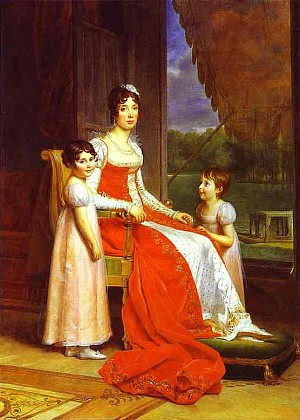Travels Through North America, during the years 1825 and 1826
|
I visited several bookstores; the store of Messrs. Carey, Lea & Carey appeared to be well assorted; Tanner's is the best mapstore.
|
|
The academy of fine arts is a collection of paintings and statues. The best works which we saw belong to Count Survilliers. Among these was the count's own portrait, robed as king of Spain, the portrait of his lady, and his two daughters, while yet children, all painted by Gérard of Paris. There were four busts, one of Madame Mère, the queen of Naples, Madame Murat, the princess Borghese, and the empress Marie Louise; and last of all a statue, representing the infant king of Rome, all by Canova. Amongst other paintings I observed several from the Flemish school, very few Italian, but some very fine pieces by Granet, which represented the interior of an Italian cloister. Two large paintings, one representing the children of Niobe by Rehberg, and the other the raising from the dead by touching the bones of the prophet Elisha, by the American painter Allston; both have merit, but I was neither pleased with the coloring nor execution. The statues are mostly casts, copies of the most famous antiquities. I observed, however, amongst them, the Venus of Canova.
|
2011.10.29 |
